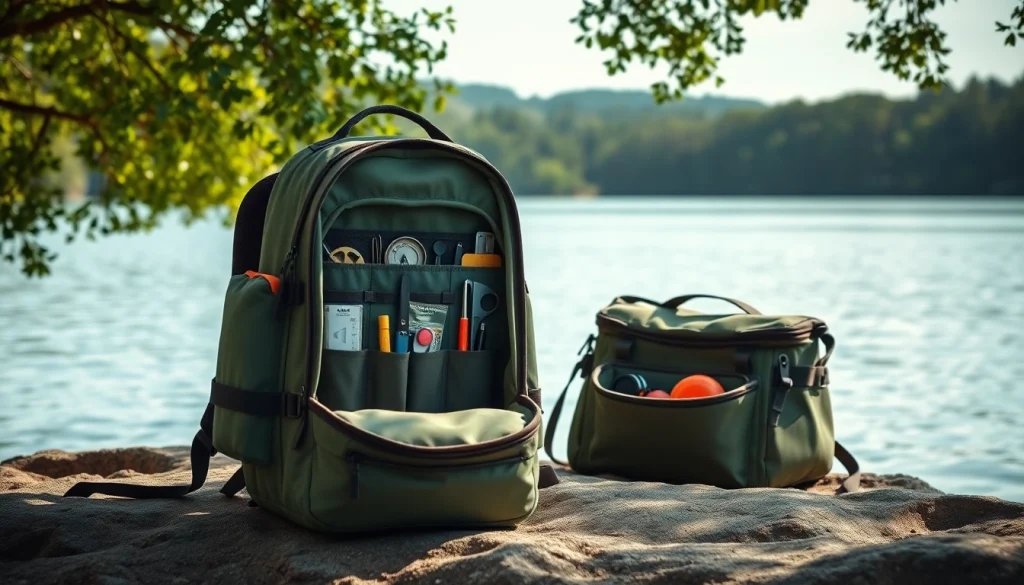Understanding the Importance of a Fly Fishing Backpack
When embarking on a fly fishing adventure, one of the essential pieces of equipment you will need is a reliable fly fishing backpack. This multifunctional gear ensures that you carry everything you need while keeping your hands free and your movements unhindered. The right backpack enhances not only your comfort but also your overall fishing experience, allowing you to focus on what you enjoy most: catching fish.
Why Choose a Dedicated Fly Fishing Backpack?
A fly fishing backpack is specifically designed to meet the unique demands of anglers. Unlike regular backpacks, they often contain specific compartments for fishing tackle, hydration systems, and other fishing gear that make them an indispensable asset on the water. They are typically lightweight and designed for organization, ensuring quick access to your equipment when you need it.
Key Features of an Effective Fly Fishing Backpack
The best fly fishing backpacks come with several standout features that cater to avid anglers. Key attributes include:
- Water Resistance: A good backpack should withstand wet conditions, keeping your gear dry.
- Multiple Compartments: Different compartments for tackle, flies, reels, and personal items enable better organization.
- Padded Straps: Comfortable straps help you carry your pack for extended periods without discomfort.
- Hydration Options: Many models allow for the incorporation of a water reservoir, keeping you hydrated during long trips.
Comparison with Other Fishing Gear Options
While traditional fishing tackle boxes are popular, they lack the functionality and ease of mobility offered by a well-constructed fly fishing backpack. The versatility of a backpack allows for hands-free movement, which is particularly beneficial in rugged landscapes or when navigating waterways. In contrast, a tackle box usually requires you to set it down somewhere, reducing your accessibility to vital tools at critical moments.
Essential Components of a Fly Fishing Backpack
Beyond its primary function as a carrier, a fly fishing backpack must boast essential components to ensure convenience and efficiency while fishing. Understanding these components can help you select a backpack that suits your needs perfectly.
Storage Solutions for Tackle and Gear
Organizational capabilities are a hallmark of a quality fly fishing backpack. Look for models that feature:
- External Pockets: For quick access to items like leaders, tippets, or snacks.
- Tool Holders: Dedicated slots for pliers, nippers, and other tackle tools can keep your equipment readily available.
- Fly Compartments: Some backpacks include specialized compartments or foam patches for storing flies securely.
Best Materials for Durability and Comfort
The materials used in constructing a fly fishing backpack heavily influence its longevity and performance. Opt for fabrics such as:
- High-Density Nylon: Known for its strength and lightweight properties.
- Waterproof Coatings: These enhance durability and protect your gear from the elements.
- Breathable Fabrics: Essential for comfort, particularly in warmer conditions.
Adjustable Straps and Ergonomic Design
Comfort is paramount when selecting a fly fishing backpack. Look for options with:
- Adjustable Shoulder Straps: These allow you to customize the fit for maximum comfort during long excursions.
- Hip Belts: Distributing weight evenly helps reduce fatigue while walking.
- Ventilated Back Panels: These enhance airflow, keeping your back cool and comfortable.
Choosing the Right Size for Your Fly Fishing Backpack
Finding a fly fishing backpack that fits your specific needs involves considering both size and functionality. Factors such as trip length, personal preference, and the amount of gear you bring will affect your selection.
Factors to Consider: Day Trips vs. Longer Excursions
Your typical fishing trip duration should strongly influence the size of your backpack. For day trips, a smaller, lighter backpack may suffice, featuring just enough space for essential items, while longer excursions necessitate a larger capacity to accommodate food, water, and extra gear.
Fit Guidelines for Optimal Comfort
Choosing a well-fitting backpack can dramatically improve your experience. Aim to try on different backpacks and adjust them for width, height, and weight distribution. An ideal fit should allow for movement without being restrictive, supporting your natural motion while casting or moving through rough terrain.
How to Assess Volume and Space Needs
Consider the volume of gear you typically carry to help gauge your backpack size. Opt for one with modular compartments if you have various items that require organization. Many manufacturers provide volume measurements, so assess your items and compare them to the specifications of the backpack to choose wisely.
Care and Maintenance Tips for Your Fly Fishing Backpack
Like any gear, a fly fishing backpack requires regular maintenance to ensure its longevity and performance. Here are some care and maintenance tips to keep in mind.
Cleaning Techniques for Various Materials
Cleaning your fly fishing backpack properly is crucial to ensuring that it remains functional and looks good. Depending on materials:
- Nylon: Use a gentle soap solution and a soft brush to remove dirt without damaging the fabric.
- Polyester: Similar cleaning methods apply, but ensure all soap is rinsed thoroughly to prevent residue buildup.
Storage Recommendations Between Fishing Trips
Proper storage can prolong the backpack’s lifespan. Store your backpack in a cool, dry place away from direct sunlight. Avoid folding it unnecessarily to prevent wear on the seams and zippers.
Repair Options for Common Wear and Tear
With regular use, you may encounter wear and tear on your backpack. Most manufacturers offer repair kits, or you can take it to a local outdoor shop for professional repairs on zippers or fabric damage to extend its functionality.
Enhancing Your Fishing Experience with a Fly Fishing Backpack
Effectively leveraging your fly fishing backpack can greatly enhance your daily fishing expeditions. The organization of your gear and strategic packing will permit a more efficient and enjoyable fishing experience.
How to Organize Your Gear Efficiently
Effective organization can help you navigate quickly while on the water. Utilize different compartments for distinct types of gear—use smaller pockets for leaders and tippets, and keep your tools readily accessible through dedicated holders. Consider color-coding your items or using clear containers, which can facilitate quick identification of gear while on the go.
Optimal Packing Techniques for Easy Access
Utilizing optimal packing techniques maximizes your backpack’s functionality. Always pack heavier items close to your back to maintain balance and help stabilize your movements. Place commonly used items, such as flies and tools, toward the outer pockets to ensure they’re easy to reach without rummaging through your entire bag.
Planning a Day Out: Essential Items to Include
When you’re planning to head out, ensure your fly fishing backpack is stocked with all essential gear. Items to consider including are:
- Fly boxes
- Multiple tippet spools
- Leader material
- Tools such as pliers or nippers
- Sunscreen and insect repellent
- A small first-aid kit
- Snacks and a water bottle
Incorporating these elements will help ensure a successful day on the water, allowing you to focus entirely on enjoying your fishing experience.





